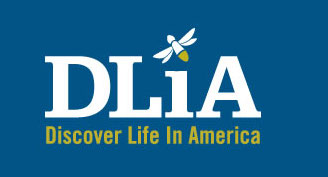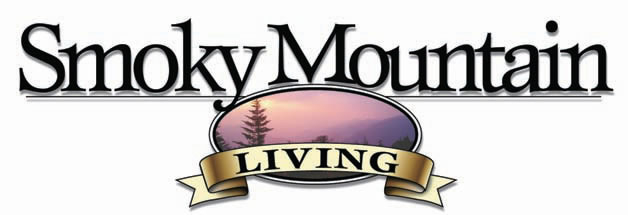One of the most exciting elements of the ATBI is the ongoing discovery of organisms that are new to science or are new records for park.
Species Tally Chart Key:
- "NEW TO SCIENCE": species have never been identified anywhere before.
- "NEW TO THE PARK": species have never been identified in the Park before.
- "HISTORIC RECORDS": species known to exist in the park prior to the ATBI.
- Highlighted Title: this will link you to the scientific taxon page.
- Highlighted '(map)': a click on these links will take you to a watershed distribution system for all species of this group.
| ORGANISM GROUP | HISTORIC RECORDS | NEW TO THE PARK | NEW TO SCIENCE | TOTAL DISCOVERED |
|---|---|---|---|---|
| Acanthocephala | 0 | 1 | 0 | 1 |
| Algae: | 358 | 566 | 78 | 1,002 |
| Annelids: Aquatic and Terrestrial Worms & Leeches | 22 | 68 | 5 | 95 |
| Arachnids: Harvestmen or Daddy Long-legs | 1 | 21 | 2 | 24 |
| Arachnids: Ticks | 7 | 4 | 0 | 11 |
| Arachnids: Mites | 20 | 228 | 44 | 292 |
| Arachnids: Scorpions and Pseudoscorpions | 11 | 10 | 0 | 21 |
| Arachnids: Spiders | 228 | 262 | 41 | 531 |
| Bryozoa | 0 | 1 | 0 | 1 |
| Chilopoda | 19 | 41 | 0 | 60 |
| Cnidaria | 0 | 4 | 0 | 4 |
| Coleoptera | 549 | 1,952 | 61 | 2,562 |
| Collembola | 62 | 148 | 59 | 269 |
|
Crustaceans: |
5 | 3 | 3 | 11 |
| Crustaceans: | 10 | 65 | 26 | 101 |
| Dermaptera: Earwigs | 2 | 0 | 0 | 2 |
| Diplopoda | 38 | 31 | 3 | 72 |
| Diplura | 4 | 5 | 5 | 14 |
| Diptera: flies | 800 | 1193 | 55 | 2,048 |
| Ephemeroptera: Mayflies | 75 | 51 | 8 | 134 |
| Fungi | 2,157 | 583 | 58 | 2,798 |
| Hemiptera: Bugs and Hoppers | 282 | 407 | 4 | 693 |
| Hymenoptera: Bees and Ants, etc. | 250 | 654 | 21 | 925 |
| Isoptera: Termites | 0 | 2 | 0 | 2 |
| Lepidoptera: Moths and Butterflies | 670 | 1,155 | 37 | 1,862 |
| Lichens | 343 | 451 | 37 | 831 |
| Mecoptera: Scorpionflies | 15 | 2 | 1 | 18 |
| Microbes: Archaea | 0 | 0 | 44 | 44 |
| Microbes: Bacteria | 0 | 206 | 270 | 476 |
| Microbes: Microsporidia | 0 | 3 | 5 | 8 |
| Microbes: Protozoa | 1 | 54 | 2 | 57 |
| Microbes: Viruses | 1 | 16 | 7 | 24 |
| Microcoryphia: Jumping Bristletails | 1 | 2 | 1 | 4 |
| Molluscs: Clams and Snails | 122 | 61 | 2 | 185 |
| Myxomycetes (now part of Ameobozoa) | 128 | 143 | 18 | 289 |
| Nematodes | 11 | 74 | 3 | 88 |
| Nematomorpha | 1 | 3 | 0 | 4 |
| Nemertea | 0 | 1 | 0 | 1 |
| Neuroptera: Lacewings, Antlions, etc. | 12 | 38 | 0 | 50 |
| Odonata: Dragonflies and Damselflies | 58 | 36 | 0 | 94 |
| Orthoptera: Grasshoppers, Crickets, etc. | 65 | 40 | 2 | 107 |
| Orthopteroids (other) | 6 | 7 | 0 | 13 |
| Pauropoda | 7 | 25 | 17 | 49 |
Phthiraptera - Lice
|
8 | 48 | 0 | 56 |
Plants: non-vascular
|
463 | 11 | 0 | 474 |
| Plants: vascular | 1,598 | 104 | 1 | 1,703 |
| Platyhelminthes | 5 | 38 | 7 | 50 |
| Plecoptera - stoneflies | 70 | 50 | 3 | 123 |
| Porifera | 0 | 2 | 0 | 2 |
| Protura | 7 | 9 | 10 | 26 |
| Psocoptera | 16 | 52 | 7 | 75 |
| Siphonaptera | 17 | 9 | 1 | 27 |
| Symphyla | 0 | 0 | 2 | 2 |
| Tardigrades | 3 | 59 | 18 | 80 |
| Thysanoptera | 0 | 48 | 0 | 48 |
| Thysanura | 1 | 0 | 0 | 1 |
| Trichoptera | 170 | 65 | 2 | 237 |
| Vertebrates: Amphibians | 41 | 3 | 0 | 44 |
| Vertebrates: Aves | 238 | 11 | 0 | 249 |
| Vertebrates: Fishes | 70 | 7 | 0 | 77 |
| Vertebrates: Mammals | 64 | 3 | 0 | 67 |
| Vertebrates: Reptiles | 38 | 2 | 0 | 40 |
| TOTALS: | 9,193 | 9,189 | 983 | 19,365 |
(figures last updated March 2016)
Consider this ...
- It is amazing to think there are living things all around us that have gone undetected.
- Finding new records is just the first step in this ambitious project aiming to document all life forms in the Park.
- So far, since 1998, we have discovered 970 species new to science and 9,140 species new to the Park.
- The ATBI provides understanding about distributions of organisms, as well as their abundance and ecological roles in the Park.
- From this inventory knowledge, the National Park Service builds monitoring, stewardship protection, education, and research efforts. It is thus able to focus its limited resources on the most needy species.
Note: This tally of groups of organisms represents the total of all park records to date. Many of these records are still in the process of being entered into the park Biodiversity (ATBI) database. If you notice that there are more species tallied on this chart than is accessable from the database it is for the above reason. We are all hopeful that the remaining park records, historic and recent, will some day soon be included in, and accessable from the park's Biodiversity (ATBI) database by web users like you, and for more efficient access by the park's living natural resource management staff.

























